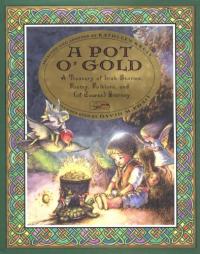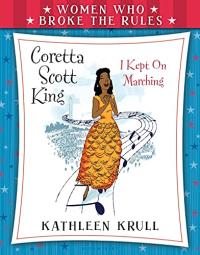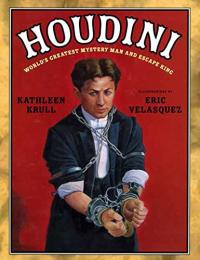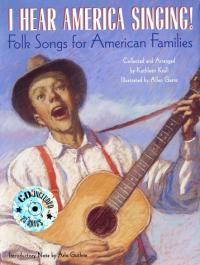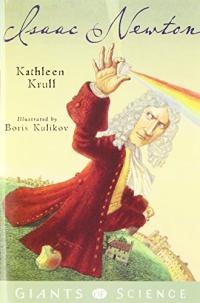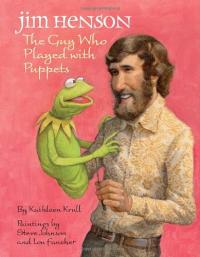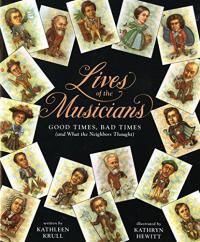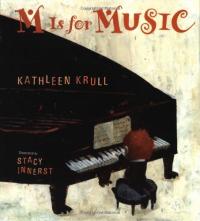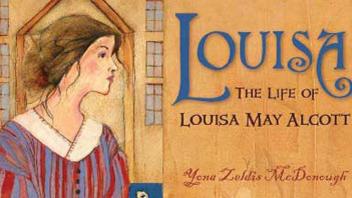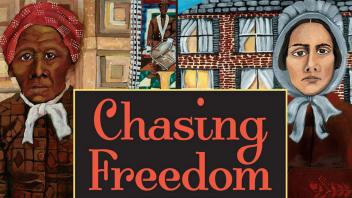
Biography
Since she was a young girl, Kathleen Krull has always known that she wanted to be a writer. In the second grade she wrote short stories and poems. At age ten, she wrote a book called “Hair-Do’s and People I Know”. As a teenager, she worked at the public library until she got fired for reading on the job.
Krull studied English at Lawrence University in Wisconsin. After graduation she worked as a children’s book editor in the Midwest. While editing for different publishers, she learned about the industry and wrote books as an in-house author. After a decade of editorial work, Krull moved to San Diego and eventually settled into her new career as a children’s book author.
Over the years, Kathleen Krull has mastered the art of writing high-interest informational books for children. Through her award-winning “Lives of…” series, Krull humanizes many of history’s most important writers, artists, musicians, athletes, and leaders. Krull has also won awards for her compelling, well-researched picture books like Wilma Unlimited: How Wilma Rudolph Became the World’s Fastest Woman and Harvesting Hope: The Story of Cesar Chavez. Her most recent series, “Giants of Science”, offers middle school readers an in-depth look at famous scientists like Isaac Newton and Leonardo da Vinci.
Kathleen Krull died in January 2021 at the age of 68. She was married to children’s book illustrator Paul Brewer. Together they created two picture books: Clip Clip Clip: Three Stories about Hair and How to Trick or Treat in Outer Space. To learn more about Krull’s life, books, and teacher resources, visit the official Kathleen Krull website .
The children’s book world remembered Kathleen Krull’s life and wonderful books, including this obituary from Publishers Weekly and this remembrance from Cynthia Leitich Smith . From Publishers Weekly:
Jeannette Larson, Krull’s longtime editor at HMH, paid fond tribute to her author and friend. “Kathy made an editor’s role easy, because her own excellent work was complemented by her openness to collaboration and her appreciation for what an adventurous illustrator can bring to a text,” Larson said. “Most important, she never forgot that her primary readers were kids. Although she didn’t compromise her deep research, she had a knack for highlighting an angle or tidbit that a kid would find fascinating or funny. Through our many books together, I saw that over and over across a remarkable range of subjects — a talent that spilled over from her own curiosity and sense of humor.”
“Even the mail carrier got a glimpse of her personality; her envelopes are collector’s items! Despite the email era, Kathy continued to send cards or packages adorned with a ridiculous or flattering, or both, nickname for the recipient, often written in giant letters and complemented by an array of cartoons or stickers. Her love of fun echoed in so much of what she did, whether in work or friendship.”
Find this author’s books on these booklists
Themed Booklist
Aliens! (And Other Strange Creatures)
Themed Booklist
Biographies for Women’s History Month
Themed Booklist
Books for Hispanic Heritage Month
Themed Booklist
Books for Martin Luther King, Jr. Day
Themed Booklist
Exploring Lives
Themed Booklist
Great Read Alouds for Third Graders
Themed Booklist
Holiday Buying Guide 2004
Themed Booklist
Inspiring Lives: Hispanic Heritage
Themed Booklist
Life’s Ups and Downs: Emotions and Accomplishments
Themed Booklist
Louisa May Alcott and Her Times
Themed Booklist
More Bugs, Bird, and Animals
Themed Booklist
